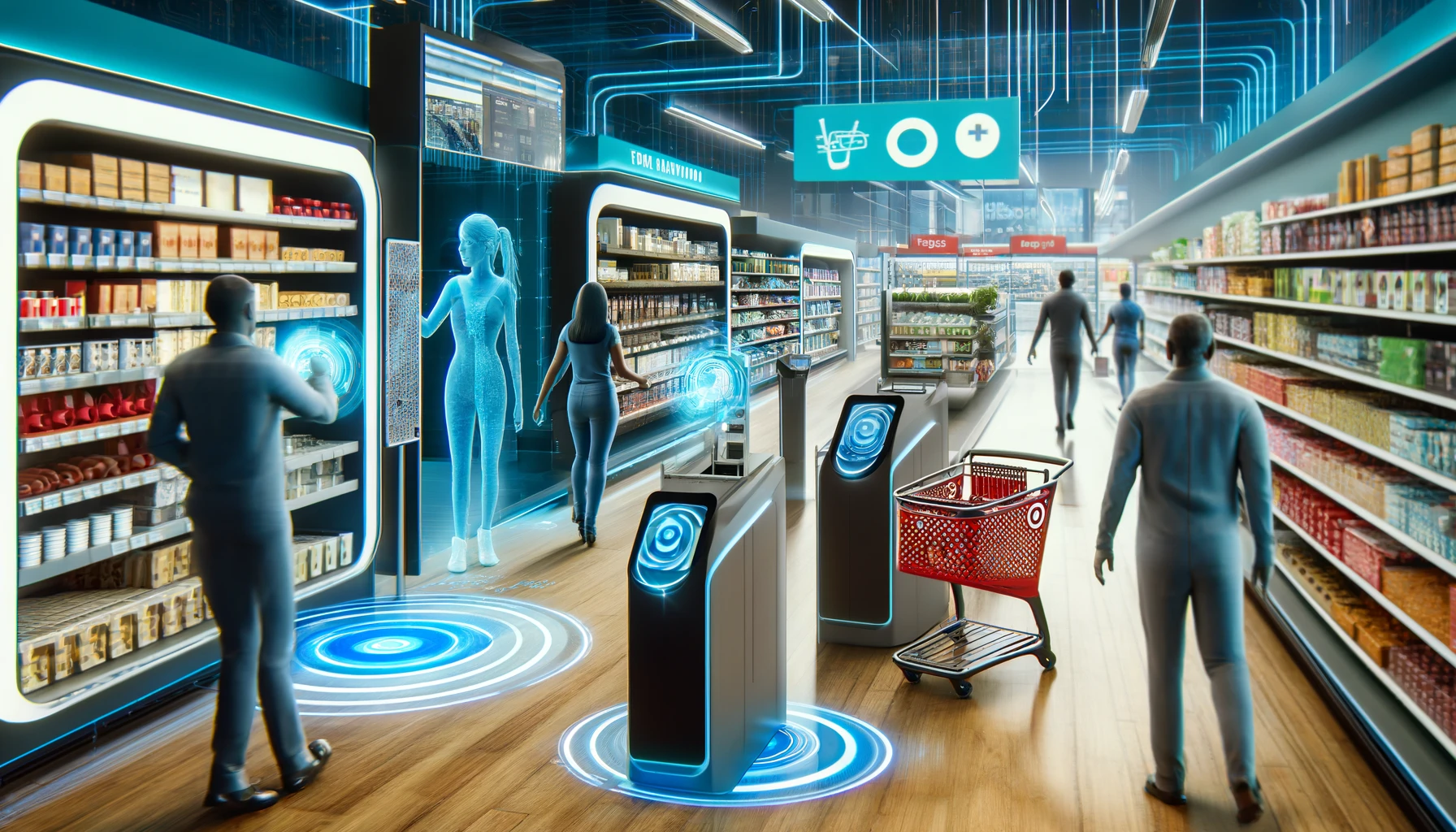
The retail industry is continually evolving, driven by advances in technology aimed at enhancing the shopping experience and streamlining operations. A notable example of this evolution is the introduction of handheld ID scanners in stores like Target. These devices, which resemble traditional barcode scanners, are designed specifically to read the barcodes on government-issued identification cards. Initially introduced by Quality Food Centers (QFC) in 2018, this technology has now made its way into Target outlets, signaling a shift towards more technologically integrated retail environments.
Self-checkouts, commonly produced by NCR Corporation, are automated systems that allow customers to handle their own checkout process from start to finish. NCR, a leader in the field of consumer transaction technologies, designs these systems to be intuitive and user-friendly. The kiosks typically feature a touchscreen interface, barcode scanner, payment terminal, and bagging area. Customers can scan their items, pay through various accepted methods including cards and mobile payments, and bag their purchases without the assistance of a store employee. This system not only speeds up the purchasing process but also reduces labor costs for retailers and provides customers with a more controlled shopping experience, especially during busy hours or in stores with high foot traffic.
The primary function of these scanners is to facilitate a smoother transaction process, especially in self-checkout lanes. Traditionally, purchasing items that require age verification, such as alcohol and tobacco, could slow down the self-checkout process, requiring the intervention of a customer service agent to manually check the customer’s ID. However, with the new scanners, this process is automated. The scanners read the barcode on the ID, verifying it against a real-time photo taken at the checkout, thus maintaining security while expediting the checkout process.
This enhancement is part of a broader trend towards modernizing and automating retail operations. Self-checkout systems themselves were a significant innovation when they first appeared in 2003, introduced by QFC. These systems were designed to reduce wait times and allow customers a degree of autonomy over their shopping experience. However, the introduction of handheld ID scanners takes this autonomy a step further by integrating advanced technology to address the complexities associated with age-restricted purchases.
The benefits of such technologies are multifaceted. For retailers, it means quicker transactions and reduced labor costs as fewer staff are needed to oversee the checkout process. For customers, it translates into a more seamless shopping experience, where the hassle of manual ID checks is replaced by a swift, automated process. This shift is particularly significant in an era where efficiency and convenience are highly valued by consumers.
Furthermore, these advancements are not isolated to traditional retail settings. Companies like Amazon have also contributed to transforming the retail landscape with innovations like Amazon Go. This concept store eliminates the need for traditional checkouts altogether by allowing customers to pick items off the shelves and leave the store without stopping at a register. Purchases are automatically charged to the customer’s Amazon account through the app, leveraging a combination of sensors, machine learning, and artificial intelligence to track what shoppers take from the shelves.
The integration of technologies such as handheld ID scanners and automated checkout systems like those used in Amazon Go stores represents a significant leap towards modernizing physical retail spaces to better align with the digital age. These technologies not only enhance the efficiency of operations but also improve the overall customer experience by reducing friction points during shopping.
The rise of technological conveniences in retail not only encompasses innovations like handheld ID scanners and automated checkouts but also extends to services like Amazon Lockers. These lockers are designed to facilitate secure and convenient package pickup and returns without direct interaction with store staff. However, integrating technology such as near-field communication (NFC) into these systems can present challenges.
IoT technology, which allows two devices to communicate when they are brought close together, is integral to the operation of services like Amazon Lockers. It enables customers to quickly unlock their designated locker by bringing their smartphone or NFC-enabled device close to the locker’s sensor. However, the reliability of IoT can sometimes be “iffy.” For instance, the technology might not consistently recognize the customer’s device due to various factors such as device compatibility, interference, or signal issues, potentially leading to delays and a less seamless user experience.
Despite these challenges, the adoption of IoT and other automated technologies continues to grow, driven by their potential to streamline operations and enhance customer convenience. As these technologies evolve, it is likely that their reliability will improve, reducing the occurrence of such issues and further enhancing the efficiency of retail innovations like Amazon Lockers.
As we look to the future, it is clear that the intersection of technology and retail will continue to evolve and expand. The adoption of handheld ID scanners at Target and similar innovations elsewhere are merely the beginning. These advancements promise to redefine the retail landscape, making shopping quicker, safer, and more enjoyable for consumers. This evolution is a testament to the ongoing transformation within the retail sector, driven by technological innovation and an ever-increasing emphasis on consumer convenience and operational efficiency.
Image visualizing the concept of “Revolutionizing Retail: How Handheld ID Scanners and Automated Checkouts Are Shaping the Future of Shopping.” The scene captures a modern retail environment with the integration of technology such as handheld ID scanners and automated checkout systems.